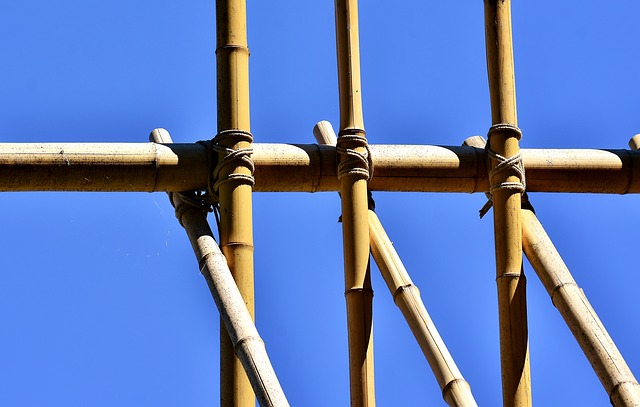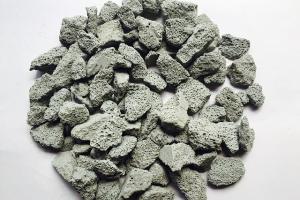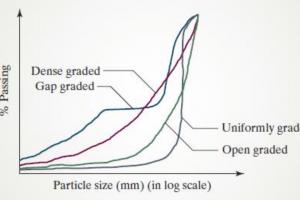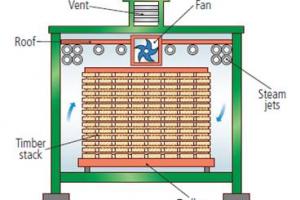Bamboo in Building Construction - Properties, Advantages and Challenges

Bamboo, often referred to as "the green steel of the 21st century," is gaining recognition as a sustainable and versatile building material. With its rapid growth rate, high strength-to-weight ratio, and minimal environmental impact, bamboo is becoming a popular choice for architects, engineers, and builders worldwide. Bamboo has been used as a construction material for centuries, particularly in regions where it grows abundantly, such as Asia, Africa, and South America.
Its strength, flexibility, and sustainability make it an excellent alternative to traditional building materials like steel, concrete, and wood. In recent years, modern architectural innovations have leveraged bamboo’s unique properties, demonstrating its potential in both residential and commercial construction. Bamboo offers numerous advantages, including its exceptional strength-to-weight ratio, rapid growth, and low environmental impact. This article explores the potential of bamboo as concrete reinforcement, highlighting its benefits, applications, and considerations for successful implementation.
Bamboo as a Building Material:
To make usable bamboo for construction, first, it is usually harvested and then it is dried. For drying, two methods are used:
- Air drying (It takes 6 to 12 weeks)
- Kiln drying (It takes 2 to 3 weeks)
Moisture is one of the big killers of bamboo. As the moisture increases the risk of an attack by fungi, and insects increases. So the best time for harvesting bamboo is the cooler season. Bamboo has a natural moisture resistance, making it less prone to rot, decay, and insect infestation. However, it is essential to properly treat and protect bamboo to enhance its moisture resistance and ensure long-term durability.
Bamboo in Concrete as Reinforcement
Bamboo is widely available in many regions worldwide, allowing for local sourcing and supporting local economies. This reduces transportation costs and promotes regional sustainability. Bamboo can also be integrated into existing construction practices without major modifications. Engineers and contractors can adapt traditional reinforcement design and construction techniques to incorporate bamboo successfully.
Bamboo can be utilized in various ways to reinforce concrete structures. It can be employed as a primary reinforcement, replacing steel entirely, or as a secondary reinforcement in combination with steel bars. Bamboo can be used in columns, beams, slabs, and even foundations. Its flexibility and adaptability make it suitable for both large-scale construction projects and smaller, more intricate designs.
Bamboo possesses remarkable tensile strength, comparable to mild steel. This strength, combined with its lightweight nature, allows for efficient designs and reduces the overall weight of concrete structures. It's inherent flexibility and ductility make it well-suited for withstanding dynamic loads, such as those experienced during earthquakes or high winds. Its ability to bend without breaking allows for better energy absorption and redistribution, enhancing the resilience of reinforced concrete structures.
Engineering Properties of Bamboo:
Tensile Strength:
 The tensile strength of bamboo is very high if we compare it with steel. The reason for that is the fibers in the bamboo usually run axially (parallel to its length). It is not in much use as steel because of its lack of transferring this tensile strength. Bamboo exhibits impressive strength, especially in tension and compression. Its tensile strength is comparable to mild steel, making it an excellent material for structural applications. Bamboo's strength-to-weight ratio is also remarkable, allowing for efficient designs and lightweight structures.
The tensile strength of bamboo is very high if we compare it with steel. The reason for that is the fibers in the bamboo usually run axially (parallel to its length). It is not in much use as steel because of its lack of transferring this tensile strength. Bamboo exhibits impressive strength, especially in tension and compression. Its tensile strength is comparable to mild steel, making it an excellent material for structural applications. Bamboo's strength-to-weight ratio is also remarkable, allowing for efficient designs and lightweight structures.
Shrinking:
The shrinking power of bamboo is much greater than any other type of wood. We can say that it is a drawback of bamboo that leads to its less usage.
Fire Resistance:
Bamboo has a lower fire resistance compared to steel and concrete. However, treatments and coatings can improve its fire performance. It can bear temperatures up to 4000°C.
Elasticity:
Bamboo has very good elasticity characteristics. It can be used in earthquake areas due to its elastic nature. Bamboo exhibits a high degree of elasticity, allowing it to recover its original shape after being subjected to stress or deformation. This property is beneficial in load-bearing applications, as it helps distribute and dissipate forces effectively. Bamboo’s natural flexibility allows it to withstand high winds and seismic activity, making it ideal for construction in earthquake-prone areas.
Weight of Bamboo:
Bamboo usually has a very low weight. So it can be moved to the place of its usage very easily. Bamboo has a relatively high density, providing stability and strength to structures. However, the density may vary depending on the species and age of the bamboo. Bamboo is lightweight compared to other traditional materials, making transportation and construction easier and cost-effective.
Sustainability
Bamboo is one of the fastest-growing plants in the world, reaching maturity in 3–5 years, unlike hardwood trees, which take decades. It can be harvested without killing the plant, making it a renewable resource.
Environmental Effect of Bamboo as building material:
Bamboo can be transported and used without any danger to health. Other building materials like cement etc can cause harmful effects on the health of its users. Bamboo is quite an economical material that can be used for construction. It has great importance in areas where there are high risks of earthquakes. Japan is a country which uses bamboo in their construction of houses because of too much occurrence of earthquakes.
Using bamboo as a concrete reinforcement material aligns with sustainable construction practices. Bamboo is a rapidly renewable resource, with some species growing several feet in just a few months. It requires minimal water and no chemical fertilizers or pesticides, making it a more environmentally friendly alternative to traditional reinforcement materials like steel. Additionally, bamboo can sequester carbon dioxide (CO2) during its growth, further contributing to carbon footprint reduction.
Real-World Applications of Bamboo in Construction
The Green School, Bali, Indonesia
One of the most famous examples of bamboo architecture is the Green School in Bali. Designed by IBUKU, the school features a series of bamboo structures that serve as classrooms, offices, and communal spaces. The buildings showcase bamboo's potential for large-scale construction, with soaring arches and intricate latticework that highlight its strength and beauty.
Bamboo Sports Hall, Panyaden International School, Thailand
The Bamboo Sports Hall at Panyaden International School in Thailand is another remarkable example of bamboo's capabilities. Designed by Chiangmai Life Architects, the hall is constructed entirely from bamboo and can accommodate up to 300 students. The structure's organic design blends seamlessly with the natural surroundings, demonstrating bamboo's versatility and aesthetic appeal.
Bamboo Pavilion, Expo 2010, Shanghai, China
The Bamboo Pavilion at Expo 2010 in Shanghai was a temporary structure that showcased bamboo's potential for innovative design. The pavilion featured a series of interconnected bamboo domes, creating a visually stunning and environmentally friendly space. The project highlighted bamboo's ability to be used in large-scale, temporary installations.
Bamboo House, Costa Rica
In Costa Rica, the Bamboo House is a prime example of sustainable living. Designed by architect Benjamin Garcia Saxe, the house is constructed primarily from bamboo and other locally sourced materials. The design emphasizes natural ventilation and lighting, reducing the need for artificial climate control and showcasing bamboo's potential for eco-friendly residential construction.
Advantages of Using Bamboo in Construction
Environmental Benefits
-
Renewable Resource: Bamboo is a rapidly renewable resource, making it an environmentally friendly alternative to traditional building materials.
-
Carbon Sequestration: Bamboo absorbs large amounts of CO2, helping to mitigate climate change.
-
Low Embodied Energy: The production and processing of bamboo require significantly less energy compared to steel, concrete, and other conventional materials.
Economic Benefits
-
Cost-Effective: Bamboo is generally less expensive than traditional building materials, making it an attractive option for budget-conscious projects.
-
Local Sourcing: In many regions, bamboo can be sourced locally, reducing transportation costs and supporting local economies.
Structural Benefits
-
High Strength-to-Weight Ratio: Bamboo's strength and lightness make it ideal for a wide range of structural applications.
-
Flexibility: Bamboo's natural flexibility allows it to withstand seismic activity, making it a suitable material for earthquake-prone areas.
Aesthetic and Functional Benefits
-
Versatility: Bamboo can be used in a variety of applications, from structural elements to decorative finishes.
-
Natural Beauty: Bamboo's unique appearance adds a distinctive aesthetic to any building.
Challenges and Solutions in Using Bamboo for Construction
-
Moisture Sensitivity: Bamboo must be properly dried and treated to prevent mold and decay. Bamboo is susceptible to insect attacks and decay if not properly treated. However, modern treatment methods, such as borate preservation, can significantly enhance its durability.
-
Pest Infestation: Applying boron treatment can protect bamboo from termites and other insects.
-
Standardization Issues: Unlike steel and concrete, bamboo lacks universal construction standards, though ongoing research is addressing this. The lack of standardized grading and testing procedures for bamboo can pose challenges for engineers and architects. Efforts are underway to develop international standards for bamboo construction.
References
-
Sharma, B., Gatoo, A., Bock, M., & Ramage, M. H. (2015). Engineered bamboo for structural applications. Construction and Building Materials, 81, 66-73.
-
Janssen, J. J. A. (2000). Designing and Building with Bamboo. Technical University Eindhoven.
-
Liese, W. (1998). The Structure and Properties of Bamboo in Relation to Its Use as a Building Material. International Journal of Bamboo Research, 2(1), 10-20.












